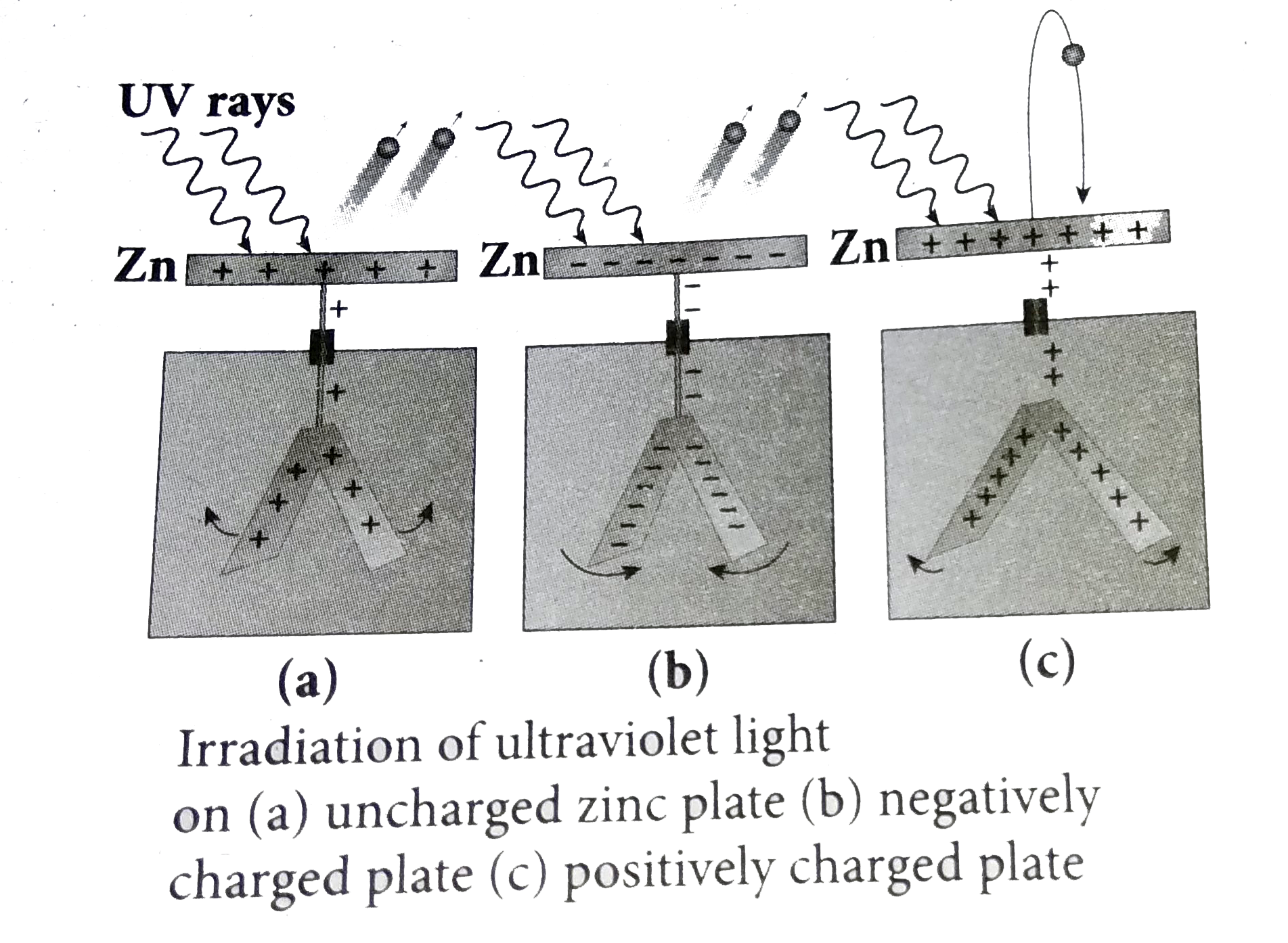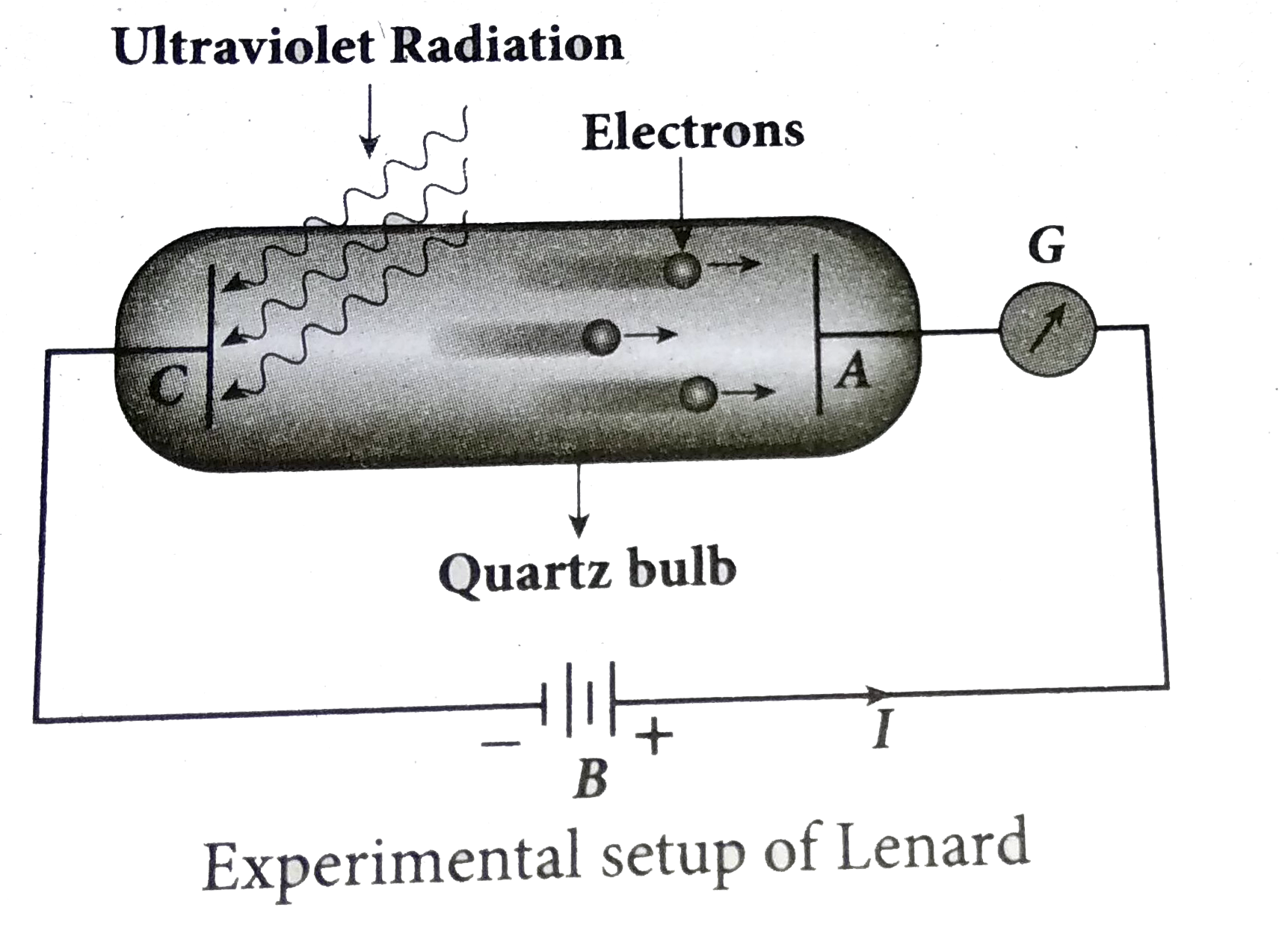Briefly discuss the observations of Hertz, Hallwachs and Lenard. Hertz observation:Solution in Tamil
• In 1887, Heinrich Hertz first became successful in generating and detection electromagnetic wave with his high voltage induction coil to cause a spark discharge between two metallic spheres.
• When a spark is formed, the charges will oscillate back and forth rapidly and the electromagnetic waves are produced.
• The electromagnetic waves thus produced were detected by a detector that has a copper wire bent in the shape of a circle. Although the detection of waves is successful, there is a problem in observing the tiny spark produced in the detector. :

• In order to improve the visibility of the spark, Hertz made many attempts and finally noticed an important thing that small detector spark became more vigorous when it was exposed to ultraviolet light.
• The reason for this behaviour of the spark was not known at that time. Later it was found that it is due to the photoelectric emission.
• Whenever ultraviolet light is incident on the metallic sphere, the electrons on the outer surface are emitted which caused the spark to be more vigorous.
Hallwachs Observation

• In 1888, Wilhelm Hallwachs, a German physicist, confirmed that the strange behaviour of the spark is due to the action of ultraviolet light with his simple experiment.
• A clean circular plate of zinc is mounted on an insulating stand and is attached to a gold leaf electroscope by a wire. When the uncharged zinc plate is irradiated by ultraviolet light from an arc lamp, it becomes positively charged and the leaves will open.
• Further, if the negatively charged zinc plate is exposed to ultraviolet light, the leaves will close as the charges leaked away quickly. If the plate is positively charged, it becomes more positive upon UV rays irradiation and the leaves will open further.
• From these observations, it was concluded that negatively charged electrons were emitted from the zinc plate under the action of ultraviolet light.
Lenard.s observation:
• In 1902, Lenard studied this electron emission phenomenon in detail. The Ultraviolet Radiation apparatus consists of two metallic plates A Electrons and C placed in an evacuated quartz bulb. The galvanometer G and battery B are connected in the circuit.
• When ultraviolet light is incident on the negative plate C, an electric current Quartz bulb flows in the circuit that is indicated by the deflection in the galvanometer. On other hand, if the positive plate is irradiated by Experimental setup of Lenard the ultraviolet light, no current is observed in the circuit
• From these observations, it is concluded that when ultraviolet light falls on the negative plate, electrons are ejected from it which are attracted by the positive plate A. On reaching the positive plate through the evacuated bulb, the circuit is completed and the current flows in it.
• Thus, the ultraviolet light falling on the negative plate causes the electron emission from the surface of the plate.
Topper's Solved these Questions
- SAMPLE PAPER-05 ( SOLVED ) BOOK - FULL MARKSCHAPTER - SAMPLE PAPER-05 ( SOLVED ) EXERCISE - PART-III
9 Videos
- SAMPLE PAPER 9BOOK - FULL MARKSCHAPTER - SAMPLE PAPER 9EXERCISE - PART-IV
10 Videos
- SAMPLE PAPER-07 (SOLVED )BOOK - FULL MARKSCHAPTER - SAMPLE PAPER-07 (SOLVED )EXERCISE - (PART - IV)(Answer all the questions.)
10 Videos
Similar Questions
Give the relation between electric field and electric potential .
View SolutionHow do we determine the electric field due to a continuous charge distribution ? Explain. Electric field due to continous charge distribution
View SolutionCalculate the electric field due to a dipole on its equatorial plane. (OR) Electric field due to an electric dipole at a point on the equatorial plane
View SolutionHertz is the unit for
View SolutionDiscuss briefly the experiment conducted by Hertz to produce and detect electromagnetic spectrum.
View SolutionBriefly discuss the observations of Herts, Hallwachs and Lenard.
View SolutionExplain Hallwach's and Lenard's observation on photoelectric effect.
Define :
a.work function
b. Threshold frequency
c. Stopping potential
View SolutionBriefly discuss the observations of Hertz, Hallwachs and Lenard.
View SolutionWhat did Hertz observe in experiment to produce electomagnetic waves?
View SolutionWrite short note on: Observations of Hallwachs and Lenard regarding photoelectric effect
View SolutionPhotoelectric effect was first observed nu Hertz. b) Select the correct statement related to the photoelectric effect:
View SolutionPhotoelectric effect was first observed by Hertz. The number of electrons ejected in the photoelectric effect is proportional to_____of light used (frequency, intensity)
View SolutionPhotoelectric effect was first observed by Hertz. Select the correct statement related to the photoelectric effect: Work function is the same for all metals.
View SolutionLenard and Hallwachs investigated the phenomenon of photoelectric effect in details during 1886-1902 through experiments. Write any two characteristic features observed in the above experiment?
View SolutionBriefly describe the work of Maxwell and Hertz in the field of electromagnetic waves.
View Solution
